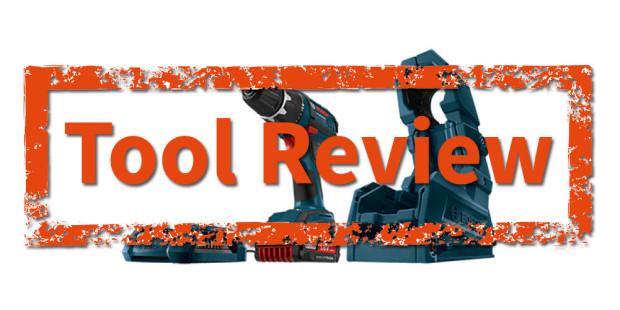Ready For A Steel Building? Keep More Green in your Pocket!

I’m not going to blabber about global warming. I’m not going to talk about pollution and the carbon footprint of your first time building project. You’re a first time builder – you have enough to think about without factoring in the way your pre-engineered steel building is going to impact the globe. Instead, I’m going to discuss energy efficiency because what really matters to a first time builder is MONEY!
According to the National Renewable Energy Laboratory and the U.S. Department of Energy, small buildings of less than 6000 square feet are responsible for 57 percent of the structural energy consumption in the nation. That includes skyscrapers. When you figure that Americans spend about $2,400 on average per 1000 feet of space for energy consumption per year, without an energy efficiency plan, your backyard workspace can cost you a significant amount.
Despite all the function, affordability and the ease of erecting a steel structure, the truth is, the one downside (probably the only downside) is that it really lacks a natural ability to maintain heat or cool air. Temperatures can climb very high in the summer and it can be colder than an igloo in the winter depending on where you’re located. For all its functional appeal, steel lacks any real thermal quality.
You need to ask yourself two questions. First, what am I going to use this building for now, and second, what will I be using this building for in the future. If even the slightest possibility exists that you may EVENTUALLY want to heat and/or cool your steel building, install insulation when you erect the building! It’s much easier to install insulation during the erection process rather than after.
Insulate Your Pockets As Well As Your Walls
Obviously, you’re going to want to spend time in your new building. Unless your pre-engineered steel building is used for storage – as a warehouse or a barn – you need to invest in insulation.
Insulation is rated in ‘R-Value.’ This is a measurement of thermal resistance. In industry terms, it’s expressed as the thickness of the material divided by the thermal conductivity. For example, if you have the unit thermal resistance of a wall, divide it by the cross-sectional area of the depth of the wall to compute the thermal resistance.
Yea, WHAT?! You’re a first time builder!
Look, it’s simple, R-value measures how efficient your insulation is. The higher the R-value, the more efficient it is. Often it means it will be more expensive (and you CAN over-do it) but in the long run, it’s worth it to pay for more expensive, higher R-value insulation in the beginning because you will save money over time.
I always recommend fiberglass insulation packages, especially for a pre-engineered steel building. At one time, it was trendy to spray the heck out of building with foam insulation. Sure, foam gets into every crack and crevice, but it has two huge drawbacks.
The first is that it adheres to the ceiling and wall panels. Should you ever need to replace a wall panel, you’ve got a real mess on your hands. The second reason I advise against spray foam insulation is a very important one, especially when erecting a pre-engineered steel building. If, while erecting the building, you miss the mastic tape with one of your self tapping wall or roof fasteners, you’ll have a small leak. (this is why Armstrong Steel provides a mastic tape more than twice as wide as the industry standard! Armstrong’s mastic tape is 1” thick! Tough to miss, right? Industry standard? A dangerously skinny 3/8”!) When moisture gets trapped between the insulation and the wall panel, you’ve got a potential rust issue on your hands. When you use fiberglass insulation, you’re able to easily identify and repair a potential leak from missing the mastic tape and this will help save your building from the caustic effects of rust.
You Have Choices
Does this mean that you’ve only got two choices in your pre-engineered steel structure?
Absolutely not! There’s a third alternative.
Pre-engineered steel buildings lend themselves very well to vapor barriers. The vapor barrier protects your structure from the damaging effects of moisture – there is little in the way of heat or cooling cost reduction -although you will see some benefit because it does have a (very) low R-value.
The advantage is that this barrier is inexpensive, adaptable to any building design, and provides a barrier between temperatures outside and those inside. In other words, it isn’t the temperature ‘lock’ that insulation can be, but it’s a fairly sturdy buffer which keeps moisture manageable and temperature regulated for short periods of time; like the few hours each weekend you might be in your structure to tinker with your classic cars, for instance.
Choosing the right insulation at the onset is important because it may determine things like screw length and how you plan on finishing the interior of your pre-engineered metal building. All Armstrong Steel buildings come with a standard one pound collateral load to support things like light fixtures and insulation, but if you want dry wall inside or stucco outside, the load will need to be adjusted.
In terms of efficiency, the other thing you should know is that the vast majority of heat transfer happens in the roof. You really need to examine the efficiencies of your roof finish and interior insulation to minimize costly temperature exchanges of heat and cold. It’s better to have higher R-value in the roof and lower R-value in the walls. There’s no reason that your walls need to have the same high R-value insulation as your ceiling.
Energy Efficiency May Be Legally Required
Another thing to consider when building that many people overlook! Your county or local building department might also have its own set of required energy efficiency regulations. It may be tempting, especially in a do-it-yourself work shed construction project, to avoid adhering to your local energy efficiency standards and save money during your first time building project; but counties are wise to this sort of thing and they’ll monitor your consumption. I don’t know why you’d want to do that anyway – in the long run, not having adequate energy efficiencies in your steel building is just going to cost you money.
Work with your Armstrong Steel project manager to ensure you’re meeting your local building code efficiency standards.
Doors and windows can also be purchased with R-values assigned to them. Your Armstrong Steel building will be designed with your requirements in mind.
And while much of this seems somewhat intuitive – you don’t want water to leak, you don’t want drafts, you don’t want thin walls when you’re planning on spending any amount of time inside the structure – there is still one more thing you need to consider.
What Color Is Energy Efficiency
You need to consider color, or more specifically, paint. That’s right. Think about it, your structure’s going to sit out in the elements for decades or more. It’s going to be subjected to temperature variations and weather conditions 24/7. Your first line of exterior defense is paint.
The panels on Armstrong Steel buildings are Energy Star rated. Reputable companies like Armstrong Steel believe that value is determined by more than the initial price – value is determined by non-tangible things like enjoyment of the structure, pride in ownership and building something you’ve always wanted.
Something many customers overlook initially though is that value is also affected by how much money your pre-engineered steel building is going to save you. You get what you pay for. Benjamin Franklin once said, “The bitterness of poor quality remains long after the sweetness of low price is forgotten”. One reason you chose a pre-engineered steel structure is the cost savings but beware of buying the cheapest!
Anyhow, opting for solar reflective paint on your panels will increase your building’s ability to reflect inefficient effects from the sun – it’s sunscreen for your building. Think about what happens with a black car and a white car in the summer months. A white car reflects the hot rays of the sun, helping to reduce temperature elevations. Does this mean you have to opt for a white building?
Again, absolutely not!
Modern technology has brought us a rainbow of color options which perform very well. Solar reflective paint is one of the simplest ways to increase your overall energy efficiency with something you’re going to buy anyway!
The Science of Saving Money
None of this is rocket science. It’s not meant to be. Reducing your carbon footprint is a good thing, saving the planet is also a pretty good thing, but SAVING MONEY – Well, that’s a GREAT THING! With a little thought in the beginning of your first time building project, and spending a little more money initially, you’re going to find that you save thousands of dollars over the lifetime of your steel building.
I am curious, though, do you think Federal energy mandates are positive? Do you think they have any real effect on the environment?
If you decide to opt for increased energy efficiency, is it because you want to help save the planet, conserve national resources, or save money – or a combination of all of these things? Why do you do it? Have you looked into energy efficiency savings beyond your structural design – like lighting, plumbing, and electricity? Let’s talk about it.
« 8 Best Mobile Apps for General Contractors
4 Ways to Make Corporate Culture Your Best Branding Tool »
Popular Posts

Inductive Battery Charging has made its way into the power tool world, and Bosch leads the “charge” into the industry. You might be familiar with inductive, or wireless charging with your smartphone or toothbrush. It’s the same technology at work here. The premise is relatively straightforward. Inductive charging uses an electromagnetic field to transfer energy… …

Small Business owners have a lot of questions about expansion. Some questions have a simple answer, while others are a bit more complex. Those answers can really vary by your industry. In some situations, a small business could snag a big client, and that’s the only trigger they need to begin growing. Others grow in… …

